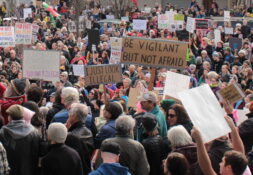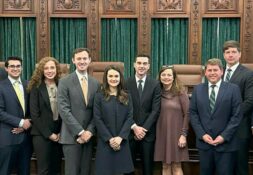1. Impact of the Final Presidential Debate – It is too early to determine the precise impact of the presidential debate – if such a feat is even possible. At time of publication, both sides have claimed victory and analysts are split on both the debate’s impact and winner; however, the debates may actually prove important. It will be important to continue monitoring national and state polls.
2. Advertisements – Thus far, television viewers at Notre Dame have viewed numerous political advertisements; however, they may have missed key ads not being aired on Indiana airways. Unlike Colorado, Iowa, Ohio and several other states, Indiana is not a “swing state.” Consequently, the state has not been heavily targeted by either the Obama or Romney campaign. Over fall break, Notre Dame students who returned home to their respective swing states witnessed this phenomenon. Senior Elizabeth Doane, a native of Florida, commented on the ads she witnessed, “Florida is being deluged with non-stop political ads. Romney claims Obama can’t manage the economy. Obama says Romney will destroy Medicaid. Both claim to be the biggest friend of Israel,” Doane said. “With Florida’s significant elderly, Jewish and Hispanic populations I am expecting to see an ad showing one or the other helping an old person across the street while wearing a yamaka and speaking Spanish!” Such ads are an important part of the political campaign and can and should be viewed online.
3. Videos – Both candidates have been victim to what pundits have deemed “embarrassing” videos. During the conclusion of the second presidential debate, President Obama strategically mentioned Governor Romney’s “47 Percent” video in a manner that prohibited the opposing candidate from responding. The video is significant in that shows Governor Romney professing 47 percent of Americans to be “victims” of the welfare state. In response, some conservatives invoke a video of then-Senator Barack Obama speaking in an African-American accent during a visit to Hampton University. During the speech, Obama repeatedly infers “our people” to mean only African Americans and advocates for policies that favor this group. Both videos – among others – are potentially prominent and may impact the election.
4. Polling/Turnout – RealClearPolitics is a useful site for not only viewing polling averages, but also polling disparities. In part, the margin of President Obama’s 2008 victory can be attributed to a favorable voting turnout. Few would deny the enthusiasm that many voters possessed in voting for not only the first African-American president, but also a man who did not vote with President Bush “90 percent of the time.” In contrast, conservatives turned out in far larger numbers for the 2010 midterm election. Which election will the 2012 turnout more closely resemble? Many polling discrepancies can be explained by the respective poll differences in predicting the turnout. In addition, it is also important to examine the voting patterns of significant groups. Hispanics are a growing minority; subsequently, they will have an increasingly large impact in future elections. President Obama this said group heftily in 2008. Will he do so again in 2012?
5. Other Elections and Issues – 2012 is a presidential election year; however, Governor Romney and President Obama are not the only candidates or issues which concern voters. Most analysts agree that Republicans will maintain control of the House of Representatives. In contrast, Democratic control of the Senate is in jeopardy. Currently, RealClearPolitics predicts 47 seats for Democrats, 43 seats for Republicans, and 10 seats too close to be determined. Other electoral issues include governor races, state legislatures, and single issues such as California’s vote regarding the legality of the death penalty.
Scott Englert is a senior political science and economics major. He voted early during fall break and encourages you, if you have not already, to do the same. Please contact him with comments or questions at senglert@nd.edu.





